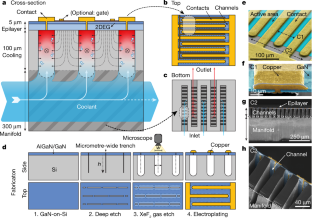(Terahertz Receiver for 6G Wireless Communications)
2020/9/8 ドイツ連邦共和国・カールスルーエ工科大学(KIT)

・ KIT の Institute of Photonics and Quantum Electronics(IPQ)、米国 Virginia Diodes(VDI)、Inistitute
of Microstructure Technology(IMT)および Institute for Beam Physics and Technology(IBPT)から成る国際チームが、ダイオード 1 個で構成する、簡易で低コストなテラヘルツレシーバの新しいコンセプトを開発。
・ 第 6 世代移動通信規格(6G)では、IoT 時代のデバイス・自動運転車の制御に AI を活用した、5G を超える高速データ伝送、低遅延、多数の端末デバイス同時接続が期待される。この次世代ワイレスネットワークは、膨大な数の小規模な無線セル(エリア)より構成される。
・ これらの無線セル間の距離は短く、最小限のエネルギー消費と電磁放射でデータを高速伝送する。基地局は小型で、ビルの外壁や街灯に容易に取付けられるものとなる。これらの基地局は、数十~数百 Gbit/s のデータ伝送速度を提供する高速ワイヤレスリンクの接続により、強力でフレキシブルなネットワークを形成する。
・ このような高速ワイヤレスリンクにはテラヘルツ搬送波が必要だが、現在のテラヘルツレシーバは高価・複雑で、全リンクのボトルネック帯域となっている。
・ 新テラヘルツレシーバを構成する 1 個のショットキーバリアダイオードは、テラヘルツ信号の振幅を回復させる検波器として機能する広帯域を提供するが、データの適切なデコーディングには、整流時に失われるテラヘルツ波の時間依存的な位相が必要となる。
・ そのため、特殊なデータ信号とデジタル信号処理技術を組合せ、クラマース・クローニッヒの関係式を通じて振幅から位相を再構築することでこの課題を解決。同関係式は、解析信号の実部と虚部の数学的な関係を示すもの。
・ このようなレシーバのコンセプトを利用し、極めてシンプルで安価なテラヘルツレシーバによる115Gbit/s のデータ伝送速度と 110m の距離での 0,3THz の搬送波を達成。これは、100m を超える距離でのワイヤレステラヘルツ通信の実証において最高のデータ伝送速度となる。
URL: http://www.kit.edu/kit/english/pi_2020_076_terahertz-receiver-for-6g-wirelesscommunications.php
<NEDO海外技術情報より>
(関連情報)
Nature Photonics 掲載論文(アブストラクトのみ:全文は有料)
Generalized Kramers–Kronig receiver for coherent terahertz communications
URL: https://www.nature.com/articles/s41566-020-0675-0
Abstract
Modern communication systems rely on efficient quadrature amplitude modulation formats that encode information on both the amplitude and phase of an electromagnetic carrier. Coherent detection of such signals typically requires complex receivers that contain a continuous-wave local oscillator as a phase reference and a mixer circuit for spectral down-conversion. In optical communications, the so-called Kramers–Kronig scheme has been demonstrated to simplify the receiver, reducing the hardware to a single photodiode1,2,3. In this approach, a local-oscillator tone is transmitted along with the signal, and the amplitude and phase of the complex signal envelope are digitally reconstructed from the photocurrent by exploiting their Kramers–Kronig-type relation4,5,6. Here, we transfer the Kramers–Kronig scheme to high-speed wireless communications at terahertz carrier frequencies. To this end, we generalize the approach to account for non-quadratic receiver characteristics and employ a Schottky-barrier diode as a nonlinear receiver element. Using 16-state quadrature amplitude modulation, we transmit a net data rate of 115 Gbit s−1 at a carrier frequency of 0.3 THz over a distance of 110 m.



